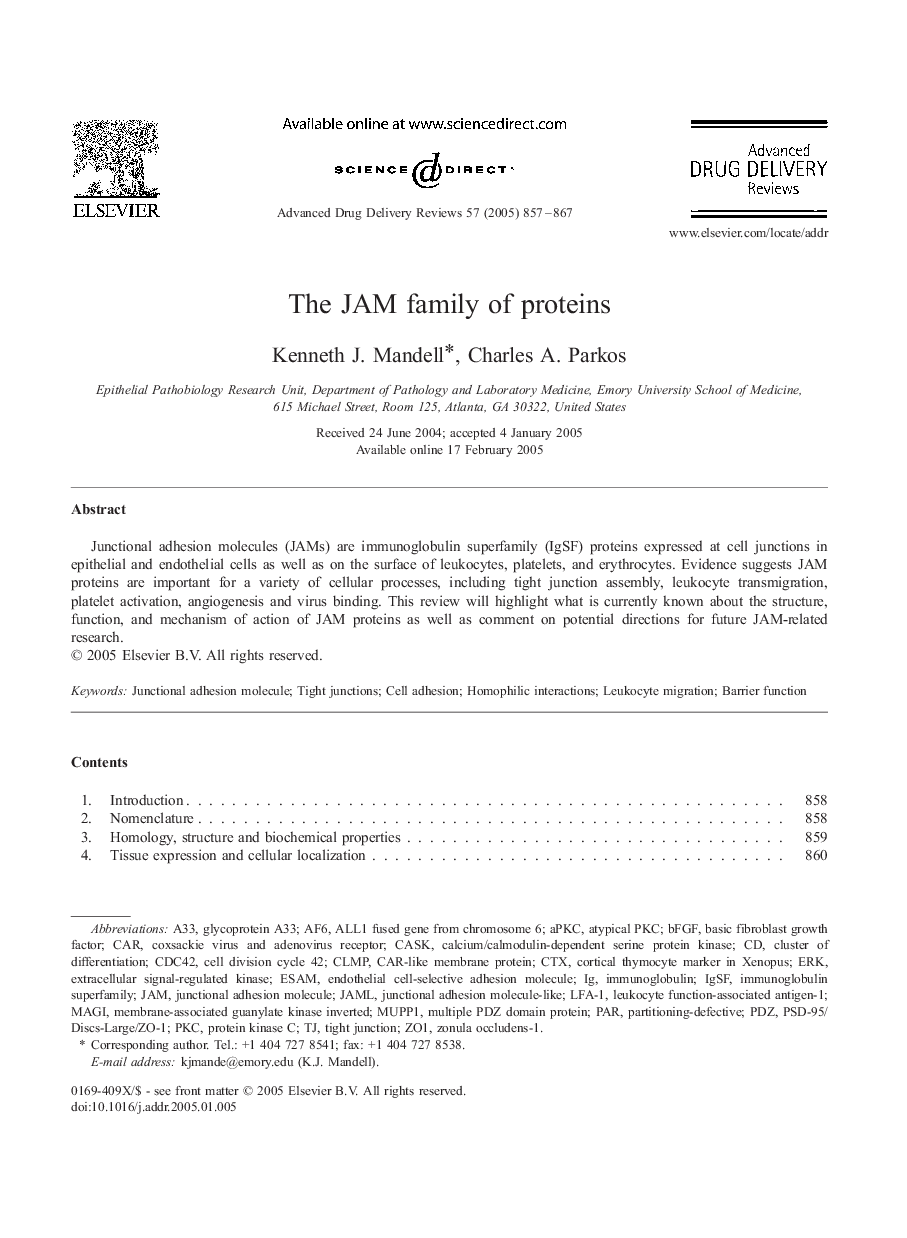| Article ID | Journal | Published Year | Pages | File Type |
|---|---|---|---|---|
| 10883833 | Advanced Drug Delivery Reviews | 2005 | 11 Pages |
Abstract
Junctional adhesion molecules (JAMs) are immunoglobulin superfamily (IgSF) proteins expressed at cell junctions in epithelial and endothelial cells as well as on the surface of leukocytes, platelets, and erythrocytes. Evidence suggests JAM proteins are important for a variety of cellular processes, including tight junction assembly, leukocyte transmigration, platelet activation, angiogenesis and virus binding. This review will highlight what is currently known about the structure, function, and mechanism of action of JAM proteins as well as comment on potential directions for future JAM-related research.
Keywords
PKCaPKCCDC42LFA-1PDZCTXIgSFCLMPMUPP1ERKA33bFGFZo1Atypical PKCleukocyte function-associated antigen-1Tight junctiontight junctionsimmunoglobulin barrier functionParImmunoglobulin superfamilycluster of differentiationcell division cycle 42basic fibroblast growth factorESAMCARJAMLeukocyte migrationjunctional adhesion moleculeMAGIZonula occludens-1calcium/calmodulin-dependent serine protein kinaseProtein kinase CCell adhesionCASKextracellular signal-regulated kinase
Related Topics
Life Sciences
Biochemistry, Genetics and Molecular Biology
Biotechnology
Authors
Kenneth J. Mandell, Charles A. Parkos,
